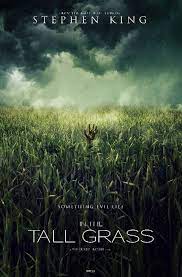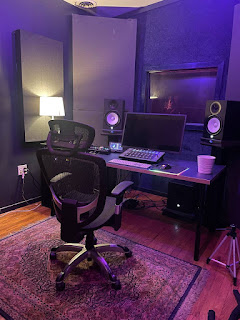CCR Blog: Music Video Edition
https://docs.google.com/document/d/1hOEHY25Tv5zU49Jr-ak53ofmowyoJ4YpepOfLkC1sSQ/edit?usp=sharing
- How does your product use or challenge conventions AND how does it represent social groups or issues?
Our music video follows the conventions of a rock music video by having cross cutting of unrelated and strange clips. Many of the 90s rock music videos were nonsensical clips thrown together of the band and their fans acting stupid. They also used fisheye lenses to film the funnier portions and had lots of looking at the camera, particularly the Red Hot Chili Peppers music videos. We also used a fisheye lens for many clips and cut away to us inspecting the fisheye lens, jumping at the camera, and Samantha playing the guitar in a weird way. Samantha playing the guitar like this was actually a perfect recreation of a clip from Red Hot Chili Peppers’ “Can’t Stop” music video. We also play the instruments and sync to the song, which is what connected the clips together in other music videos for the time. However, we also changed the conventions of these videos by having a real story connecting the funny clips. Almost all of the music videos we watched in this genre were purely the unrelated clips and no story connecting them. However, we had a story of a breakup and reconciliation connecting them. It represents teenagers and the everyday struggles that they have. In it, a teenager struggles through her day after a big break up with the one she loves, with everything reminding her of her ex boyfriend. She then goes to her band practice, where she sees her ex and wants to run away. She is then shown that people can break up and still be friends. This also represents the social issue of people leaving each other and then never talking to each other again, never getting closure. Instead, we show that just because people cannot function as a couple does not mean that they cannot function as friends. When teenagers discover this early in life, it can save them from serious heartbreak in the future when they are older. It also represents the social issue of mental health because the girl acts depressed, has trouble getting out of bed, and struggles getting the motivation to do anything. Depression is a serious mental issue and something that many teenagers suffer from. By bringing representation to it in the media, we can help bring awareness to the problems that it causes and help people get the help they need.
2.How does your product engage with audiences AND how would it be distributed as a real media text?
The video has a fun atmosphere to it, while also not condescending to the audience. Many other rock music videos are either incredibly serious or goofy to the point of annoyance. However, we had a fairly serious story, at least for a music video, along with clips of us being funny to keep the mood light. This gave us a middle ground of uniqueness, which would help audiences want to watch because it is a bit different from the normal conventions. We also actually play the song, which gives a feeling of genuineness, instead of us just pretending to play even though we have no idea. This genuineness can set us apart from other bands, who often only half-try to sync their playing, and others don’t even try at all to be contrary to what is expected. Finally, the clips we used to create a lighter atmosphere are often placed instead of showing movement between places. This gives a unique and interesting flow to the video, where the audience is confident in the outcome of the story of the video because of the clips showing the band having fun together. This different storytelling style could draw people in because it is fairly unique. If this were a real music video, it would be released on YouTube, because it has the largest market for music videos. In other words, the largest number of people would be willing and able to see the video. This is because YouTube is best for longer content that requires more thought, and since there is a story, a small amount of thought needs to go into consuming it. We would also release it on TikTok, because although less people would be willing to watch a full music video on TikTok, there are generally more people watching TikTok, so more eyes could potentially see the video.
3. How did your production skills develop throughout this project?
I learned that coming up with a story for a music video is very difficult, especially if the lyrics do not obviously tell a story. We spent many days trying to come up with an idea for the music video to no avail. Early ideas were limited to a story of “the making of the band”, but we couldn’t figure out how to tell that story. After many days of brainstorming, I had a dream where the video was about a breakup and suggested it to the group, who agreed. I also learned that it is very important to compromise with other people. I did not initially want the cross cutting in the music video because I felt it would destroy the continuity of the video. However, this is one of my favorite parts of the video now, because even though they are just us being funny, they also have meaning with where they are and who is in each shot. Finally, I found that it is important to make a storyboard, but also to have it be flexible. There were certain shots that we decided to change, or we couldn’t shoot on the day of the project, but the storyboard certainly helped us remember the overarching story in every decision we made. Without it, the video could have been much less focused, and filming would have taken much longer.
4.How did you integrate technologies – software, hardware and online – in this project?
To film the video, we decided to use Samantha’s phone. We chose this one because it was the most advanced, and because she had already tested using a fisheye lens on it and it worked. We did not want to have to change phones midway through filming because we wanted all of the shots in the same place. We also decided to use her phone because we would be using her computer to edit the video, so it was easier to film on her phone so we could transfer the videos easily. This was also a big factor in deciding not to use an actual camera, because you can’t airdrop with a camera and it would take much longer to transfer the pictures from the camera to the computer. We used I-Movie to edit, because many of us had experience in how to use it, and it gives more options for editing. Samantha used to have a YouTube channel where she would edit the videos on I-Movie, so she especially had experience in how to edit easily. We also used Blogger to post blogs about our project. We knew that we would have to upload the video to whatever blog we used, and since Blogger and YouTube are both google applications, it is easier to share from YouTube to Blogger. Blogger is also free, which many other blogging sites were not, and it is easy to use, which does not apply to many of the free sites. There are also no commercials distracting us on Blogger, so this is an obvious plus.



Comments
Post a Comment